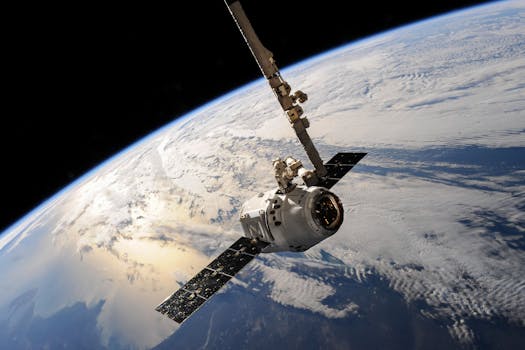MEO Satellites: Revolutionizing Global Communication with Medium Earth Orbit Technology – MEO Satellites
MEO satellites are transforming the way we communicate globally, offering faster and more reliable connections. Learn more about the benefits and applications of Medium Earth Orbit technology.

MEO Satellites: Revolutionizing Global Communication with Medium Earth Orbit Technology – MEO Satellites
MEO satellites, or Medium Earth Orbit satellites, are a type of satellite that operates at an altitude of around 2,000 to 36,000 kilometers above the Earth’s surface. This orbit is higher than Low Earth Orbit (LEO) satellites but lower than Geostationary Orbit (GEO) satellites. MEO satellites have gained significant attention in recent years due to their unique benefits and applications in the field of satellite communication.
The use of MEO satellites is becoming increasingly popular, particularly for providing global connectivity and communication services. One of the primary advantages of MEO satellites is their ability to offer faster and more reliable connections compared to traditional GEO satellites. This is because MEO satellites have a lower latency and can provide more precise location-based services.
MEO satellites are being used in a variety of applications, including navigation, communication, and Earth observation. For example, the Global Positioning System (GPS) relies on a network of MEO satellites to provide location information and timing signals to GPS receivers on the ground. Similarly, MEO satellites are being used to provide broadband internet services to remote and underserved communities around the world.
Benefits of MEO Satellites
MEO satellites offer several benefits over traditional GEO satellites. One of the main advantages is their lower latency, which enables faster and more reliable communication services. MEO satellites also have a wider coverage area, making them ideal for providing global connectivity services. Additionally, MEO satellites are less prone to interference and signal degradation, resulting in higher quality communication services.
Another significant benefit of MEO satellites is their ability to provide more precise location-based services. This is because MEO satellites have a higher orbit than LEO satellites, which enables them to provide more accurate location information. This makes MEO satellites ideal for applications such as navigation, tracking, and emergency response services.
Applications of MEO Satellites
MEO satellites have a wide range of applications, including navigation, communication, and Earth observation. One of the most significant applications of MEO satellites is in the field of navigation. The GPS relies on a network of MEO satellites to provide location information and timing signals to GPS receivers on the ground. MEO satellites are also being used to provide broadband internet services to remote and underserved communities around the world.
MEO satellites are also being used in the field of Earth observation, where they provide high-resolution images of the Earth’s surface. This information is used in a variety of applications, including environmental monitoring, disaster response, and urban planning. Additionally, MEO satellites are being used to provide communication services to the maritime and aeronautical industries, enabling ships and aircraft to stay connected while at sea or in the air.
Challenges and Limitations of MEO Satellites
Despite the many benefits and applications of MEO satellites, there are also several challenges and limitations to their use. One of the main challenges is the high cost of launching and operating MEO satellites. This is because MEO satellites require more powerful rockets to reach their higher orbit, resulting in higher launch costs. Additionally, MEO satellites require more complex and expensive ground infrastructure to operate and maintain.
Another significant challenge facing MEO satellites is the risk of interference and signal degradation. This can occur due to a variety of factors, including the presence of other satellites in the same orbit, solar activity, and atmospheric conditions. To mitigate these risks, satellite operators must invest in advanced technologies and techniques, such as signal processing and interference mitigation systems.
Conclusion
In conclusion, MEO satellites are transforming the way we communicate globally, offering faster and more reliable connections. Their unique benefits and applications make them an ideal solution for providing global connectivity and communication services. While there are challenges and limitations to their use, the benefits of MEO satellites far outweigh the costs. As the demand for global connectivity and communication services continues to grow, the use of MEO satellites is likely to become even more widespread.







